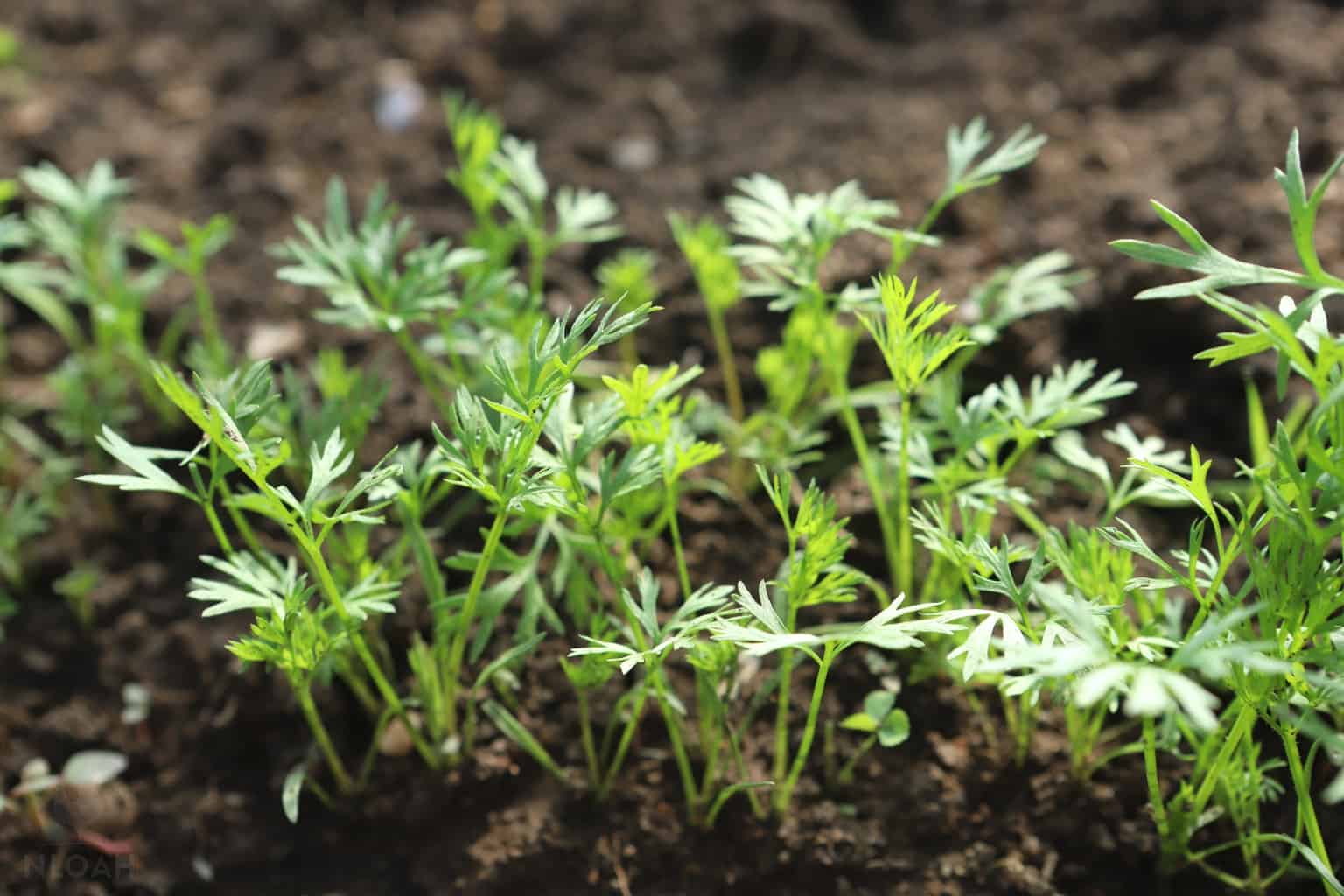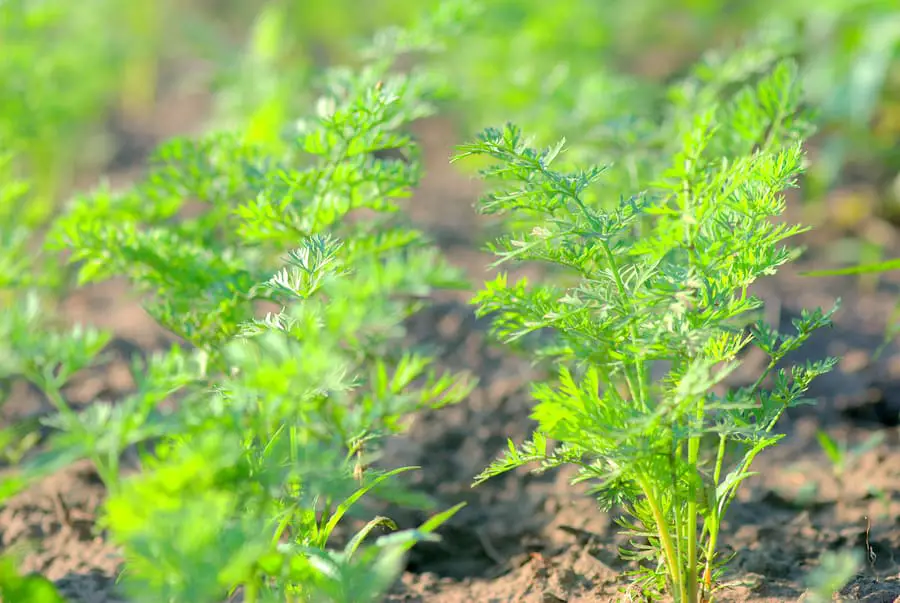Overview
Carrots are the easiest vegetables to plant in the garden and can be very satisfying, yet it might be a little confusing to determine the initial stages of carrot growth to the novice. One of the questions in the list of the most frequently asked questions by new gardeners is what do the carrot sprouts look like?
The article will give a visual and descriptive guide that will enable you to identify carrot seedlings properly as well as to get knowledge about the processes of its development.
Introduction
Carrots (Daucus carota) are root crops which children and adults value and find useful because of its crispy firmness, sweet flavour and nutrition. They are also grown under the ground hence may not always show up as having grown instantly on the ground.
The seeds of carrot are small and have a long germination time and this makes many gardeners doubt their action of whether they are succeeding after their planting or not. It is imperative to know how carrot sprouts would appear in case one does not want to end up pulling them out, thinking they are weeds.
The Germination Process: How Carrot Seeds Sprout
The carrot seeds are known to germinate within 7 to 21 days, making it dependent on temperature, moisture conditions, and seed quality of the soil. Carrots need patience unlike some fast sprouting vegetables.
Key Conditions for Germination:
- Soil temperature: Ideal range is 55–75°F (13–24°C)
- Moisture: Soil must remain consistently moist
- Depth: Seeds should be sown about 1/4 inch deep
- Sunlight: Full sun is ideal for strong growth
Once germination occurs, the tiny sprouts will begin to push through the soil surface.
What Do Carrot Sprouts Look Like?
The sprouting of carrots follows two key stages that include cotyledons (seed leaves) and true leaves. This is how they were manifested at each stage.
1. Cotyledons
After sprouting, the carrot seed initially sprouts a pair of leaves called cotyledons (the same thing happens with all seeds), but these are not the real leaves; the first visible growth of the plant is the real leaves.
Characteristics of Carrot Cotyledons:
- Shape: Long, thin, and grass-like
- Color: Light to medium green
- Arrangement: Two parallel blades emerging from the soil
- Texture: Smooth, soft, and tender
- Height: Just 1–2 inches tall at first
Forgetting to look closely you might actually confuse these leaves with grass or other seedlings. Cotyledons can be confused with carrot tops, since they cannot be mistaken by weeds as they do not look like carrot tops.
2. True Leaves
The first true leaves will grow within the plant after 1014 days. They are the ones that provide the name of the plant as a carrot.
Characteristics of True Carrot Leaves:
- Shape: Feathery, lacy, and fern-like
- Color: Deep green
- Structure: Multiple small leaflets branching out from a central stem
- Growth pattern: Leaves grow in a rosette formation
When these actual leaves come out, then it becomes simpler to notice that it is a carrot. The leaves look like the tops of grown carrots as you see in stores and markets.

How to Tell Carrot Sprouts from Weeds
This is because carrot cotyledons resemble grass or weed seedlings and, therefore, it is always easy to pluck them out accidentally. The following are some of the ways of distinguishing them:
Side by Side Comparison:
| Feature | Carrot Sprout | Common Weeds/Grass |
| Cotyledon shape | Long and slender | Often round or irregular |
| True leaf shape | Feathery, fern-like | Varies; usually broad or jagged |
| Color | Light to deep green | Often darker or yellow-green |
| Growth speed | Slow | Fast |
Pro Tip:
In case that you are not sure, leave the seedlets to grow a few more days until they have developed the true leaves. It will simplify the process of identification and eliminate errors.
How Long Do Roses Last in a Vase? Top 10 secrets
Common Mistakes When Identifying Carrot Sprouts
1. Confusion of Grass and Carrots
This is because the cotyledons are slender and straight making many gardeners believe that it is just grass. However, grass tends to grow in clush and thick leaves as compared with each other.
2. Over Planting Causing Overcrowding
The seeds of Carrot are small hence tend to over seed a row. Consequently, a lot of the sprouts can be very close compressed. They are thinned prematurely and this results in the accidental destruction of true carrot seedlings. Thinning is preferably done when true leaves appear.
3. Premature Seedling Transplantation
Prematurely plucking out sprouts before true leaves grow can kill your harvest. You must never pull up something at all, unless you know it is a weed, one hundred percent sure.
Carrot Sprout Timeline: Week-by-Week Development
| Week | Growth Stage | Visible Signs |
| 1 | Germination begins | Soil cracking, tiny green shoots emerge |
| 2 | Cotyledons appear | Two long, thin leaves show up |
| 3 | True leaves start forming | Lacy, feathery leaves emerge |
| 4+ | Vegetative growth | Plant gets bushier with more leaves |
Understanding this timeline will help you track progress and avoid missteps.
How to Care for Carrot Sprouts
To ensure healthy carrot seedlings, follow these tips:
1. Keep Soil Damp (Not Wet)
Carrots are tender to dry soils when we are in the initial stages. Spray the soil lightly, so that it is always moist.
2. Thin Carefully
As soon as some true leaves develop, thin the seedlings down to leave 1-2 inches between plants. This avoids over crowding and promotes good root growth.
3. Provide Sunlight
Carrots require plenty of sunlight. It should get at least 6 hours a day. Make sure that your garden bed or container has lots of light.
4. Don’t Dig Up the Roots
The Carrot roots are tender during their young stages. Avoid making holes and pulling around the sprouts.
5. Mulch Lightly
Traces of mulch will be able to keep your planting moist and stifle any growth of weeds near your seedlings.

Photos and Visual Reference
We can show examples but with images, something we cannot do here, but a quick search on Google should give examples such as carrot seeding vs grass or carrot sprouts day by day. Getting the impression by viewing photos may be of great use when it is hard to make a decision and you are in your garden.
FAQs
Q1: What is the time of carrot sprouts recognition?
Typically in 2-3 weeks. The leaves which would emerge in the third week are the real leaves.
Q2: Do carrots have sprouts which can be transplanted?
Carrots easily get traumatized and thus cannot absorb well when transplanted. Planting them is better in the final growing site.
Q3: My sprouts are too close to each other. What to do?
Wait until the true leaves emerge and thin them out carefully by clipping the weaker ones with the help of scissors to the level of the soil.
Q4 Does carrot sprout have the smell of carrots?
No. The roots are not well developed at this point yet to give a characteristic smell of carrots.
Q5: Is it possible to raise the carrot sprouts at home?
Yes, but it will have to be grown in a deep container, bright light (ideally grow lights), and has to be drained so that the roots can properly grow.
Conclusion
As a home gardener, it is a skill that every home gardener must have to know how to identify carrot sprouts. The point is to be able to distinguish between the first cotyledon phase and a true leaf phase. The initial set of leaves may appear like grass or even weeds but the second set of the original leaves which can only be identified as the true leaves will always have a feathery and delicate appearance giving certainty that the growing plant is a young carrot plant.

